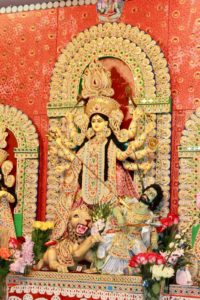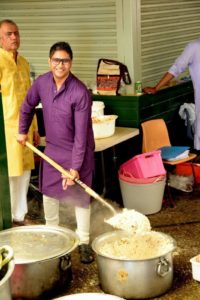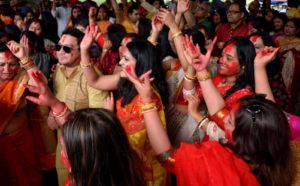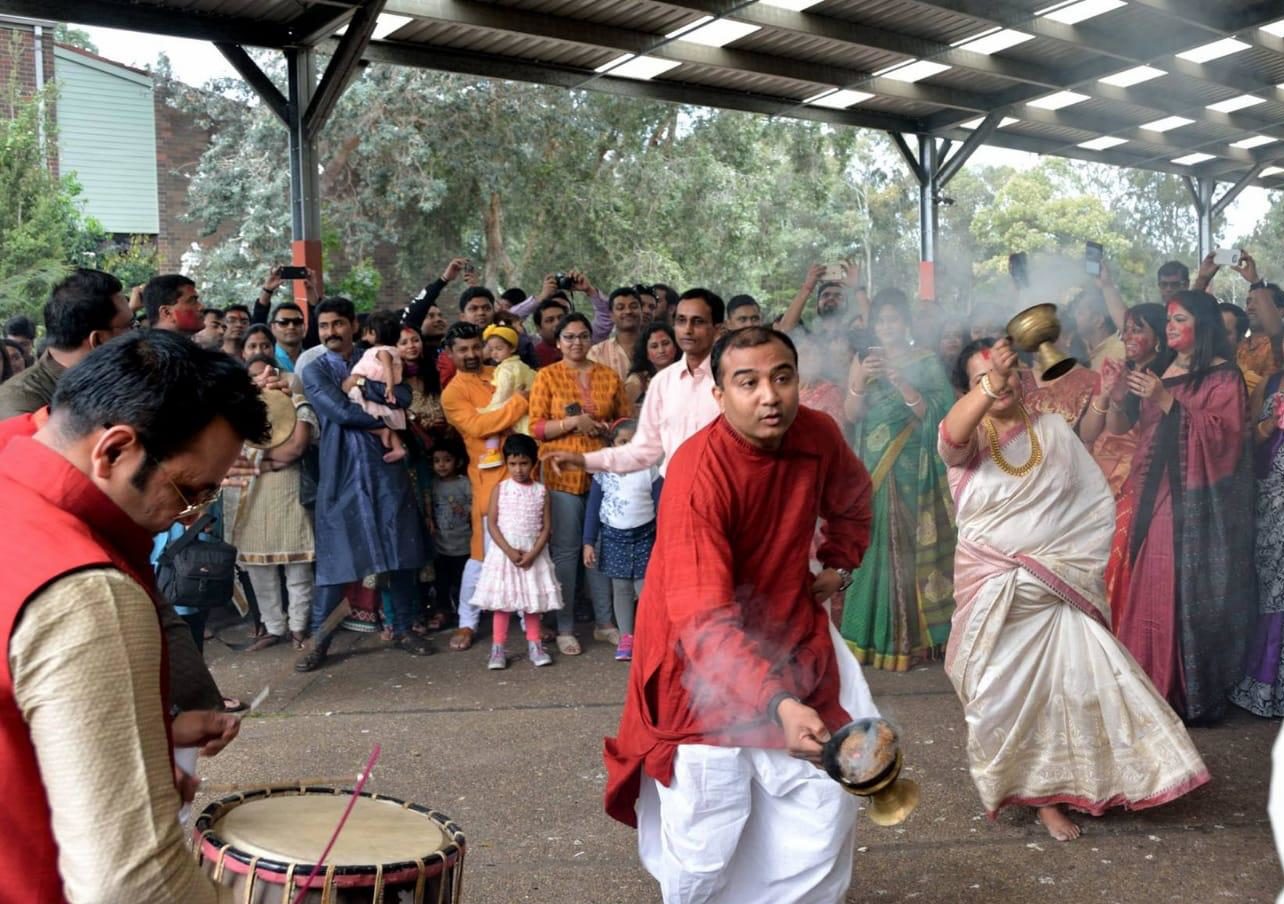Durga Puja, the greatest and the most celebrated festival in the lives of the Bengalis all over the world, had a very humble beginning in Sydney, Australia. However, it was an important milestone for the Bengalis living here, as it was the first Durga Puja organised in Australia.
When a few Bengalis come together far from the land where they were born, sooner or later, they are bound to organise a Durga Puja! And that’s exactly what had happened here in Sydney. Although the Bengali Association of New South Wales (BANSW) was established in 1975, its constitution only provided for secular cultural discourse. Then in 1977, in an annual general meeting, a small group of Bengalis decided to celebrate Durgotsab.
There has been no looking back, and the BANSW’s Puja is currently in its forty-first year. There was no deity in the first puja – a glass framed Durga image was worshiped then. In the early years, the puja was held in small community centres, and subsequently, in a temple. Now, as the Bengali community has grown in huge numbers, it is organised in a school auditorium with a lot of grandeur. Framed photo of Ma Durga has long been replaced by beautiful fiber-glass idols from Kolkata’s Kumartuli.

One can say that the Durga Puja here somewhat lacks “authenticity” as four days of religious ceremonies are squeezed into a Saturday and Sunday on a weekend that may be before or after the actual Durga Puja. However, we still feel the warmth of being embraced by the centuries old traditions and culture – the distance that separates us from our homeland is bridged and the Bengalis in Sydney come together and become a single family joined by their shared interest in traditional Bengali culture, cuisine and clothes.
Most importantly, BANSW Durga Puja is not confined to the participation of Bengalis alone – people from different communities take part in the festivities and puja becomes sarbojonin in the true sense. All are welcome and bhog and prasad are distributed for free for the two days of puja.
The festivities start from the moment the idols are brought to the puja venue, the day before the puja and unpacked with great fanfare of ululation and beating of the dhak. Volunteers start erecting the ‘Mandap’, adjusting and decorating the backdrop, cutting fruits and vegetables, setting up stalls.
In keeping with the mood heralding the great event the following day, stalls are set up where everything from fish fry to gokul pitha is sold. Dressed in dhuti-kurta and dazzling saris we feel like we have been transported home and soak up the ambience.
Puja is performed in a traditional way through bathing of the Kola bou’ in the morning, to lighting 108 candles for the Sandhi Puja in the evening. The religious rituals are elaborate and meticulously performed by the priest who is an engineer by profession.
Food plays an important role in our Puja celebration. The khichuri bhog in the afternoon and mutton curry for dinner are really delicious and the food is prepared by the team members formed of dedicated volunteers. Finance managers, IT consultants, doctors and engineers become professional chefs for the two days of the puja and prepare the most amazing bhog, vegetable fried rice, paneer masala, amer chutney and other mouth watering delicacies for thousands of people.

Also, to make this event as close to Kolkata’s barowari (community) puja as possible, food stalls are set up outside, again by a team of volunteers, and kochuri aloor dom, phuchka, jhalmuri, singara and sweets are sold. The smell of food wafts and mingles with the scent of burning incense and the fragrance of flowers.
In the afternoons and evenings there are games, competitions, fashion shows and cultural programs staged by the local talents of all age groups. Some years we are fortunate to have singers coming down from Kolkata.
In keeping with the tradition of the Kolkata pujo, a magazine titled Prabashi is published and distributed on the first day of our pujo here – and it brings enormous joy to both readers and writers.
Durga Puja may be a religious festival, it also is a social event for the young and old, women and men, children and their parents. So the two days of the festival are spent not only in performing religious rituals but also in catching up and socialising with friends, wearing lovely clothes, buying saris and jewelleries from pop up stalls and meeting new people.

Puja festivities come to an end on the second day with Debi baran, sindur khela and frenzied dance with lighted dhunuchi accompanied by the beatings of dhak. With teary eyes, we bid farewell to our mother goddess, remembering our home, missing the pujas of our childhood and waiting for the next year when we can relive this experience again.


Comments are closed.